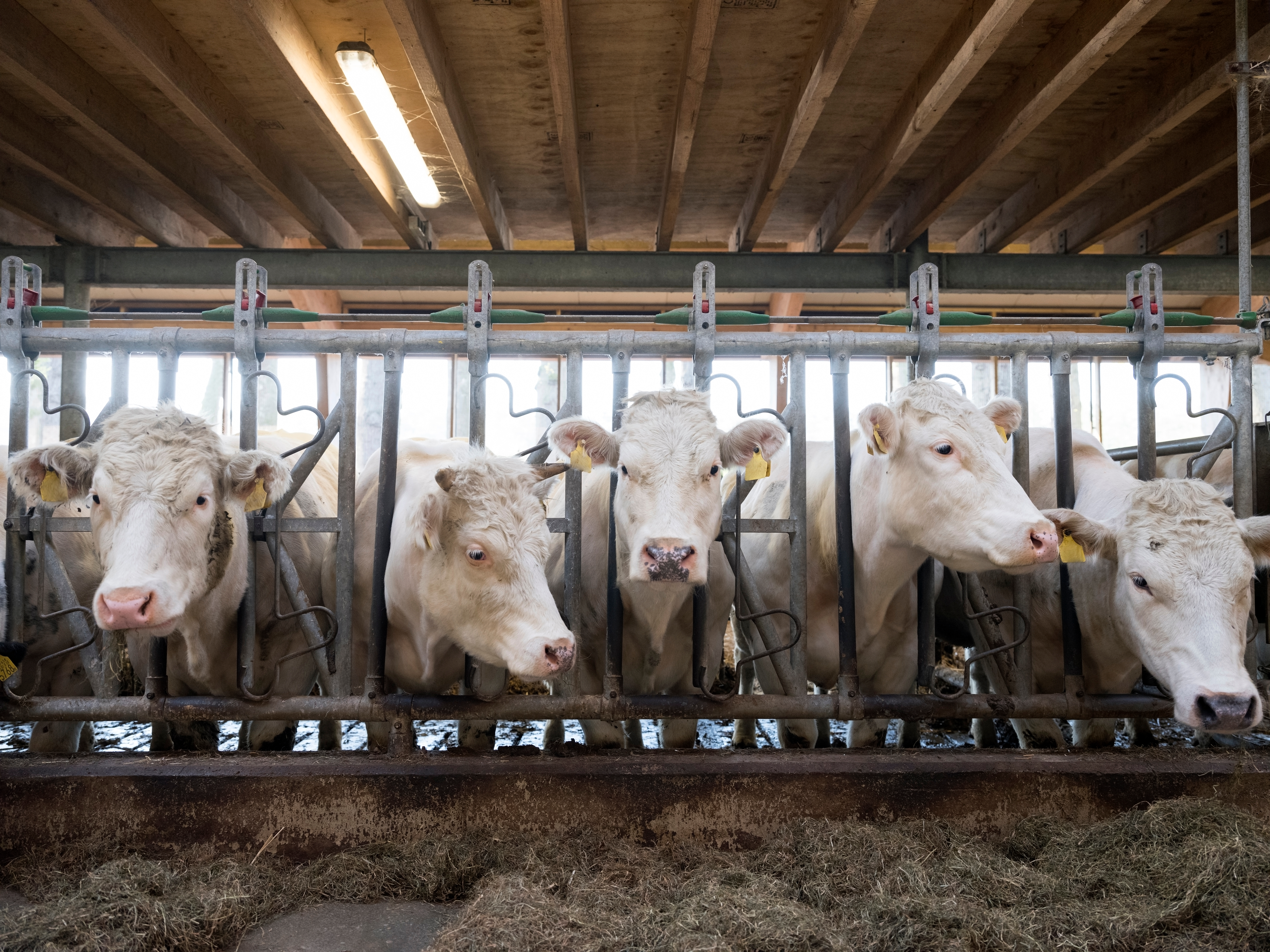Section 1 | Preconditioning Beef Calves
Page 07 /
Surgical Procedures
Castration and dehorning are the two major surgical procedures performed in beef calves. The handling and pain associated with these procedures can negatively affect the health and productivity of cattle if not properly managed. The Code of Practice for the Care and Handling of Beef Cattle recommends that both procedures be performed as early in the life of the calf as possible5. Additionally, the Code requires pain control for both of these procedures, and highly recommends that they are not performed at the same time as weaning5. Ideally, each procedure should be performed before 120 days (or 3 months) of age.

Advantages of Early Dehorning and Castration:
- Calves will have recovered from the stress of surgery by the time they are weaned and transported off the farm
- The more stressors a calf experiences, the more immune suppression that can result
- Relative to calves castrated or dehorned earlier in life, castration and dehorning at the feedlot can lead to:
- 92% increase in risk of illness
- 3.5% increase in risk of death
- Lower average daily gains (1.32 kg/day versus 1.55 kg/day)1
- Reduced area of tissue damage:
- Smaller horn buds and testes of younger animals
- Less tissue damage should mean lower levels of inflammation and pain for the animal
- Smaller horn buds and testes of younger animals
Pain Control and Surgical Procedures
As mentioned previously, the Code of Practice for the Care and Handling of Beef Cattle require pain control be used when performing painful procedures. Use of nonsteroidal anti-inflammatory drugs (such as meloxicam) following castration or dehorning may reduce the incidence of disease1. Studies have found that meloxicam at castration or dehorning led to reduced levels of cortisol, the stress hormone that can act as an immune suppressor10,11.
References
- Wilson BK, Richards CJ, Step DL, Krehbiel CR. Beef species symposium: Best management practices for newly weaned calves for improved health and well-being. J. Anim. Sci. 2017;95(5):2170–82.
- O’Connor AM, Yuan C, Cullen JN, Coetzee JF, da Silva N, Wang C. A mixed treatment meta-analysis of antibiotic treatment options for bovine respiratory disease – An update. Prev. Vet. Med. [Internet]. 2016;132:130–9. Available from: http://dx.doi.org/10.1016/j.prevetmed.2016.07.003
- Dohoo IR, Martin W, Stryhn H. Veterinary Epidemiologic Research. 2nd ed. Charlottetown, PEI: VER Inc.; 2009.
- Newberry RC, Swanson JC. Implications of breaking mother-young social bonds. Appl. Anim. Behav. Sci. 2008;110(1–2):3–23.
- NFACC. Code of practice for the care and handling of beef cattle [Internet]. Dairy Farmers of Canada. Calgary, Alberta: National Farmed Animal Care Council; 2013. 1-65 p. Available from: http://www.nfacc.ca/codes-of-practice/beef-cattle
- TAMU. Value Added Calf ( VAC ) – Management Program [Internet]. Texas Cooperative Extension: The Texas A & M University. 2014 [cited 2019 Jan 31]. Available from: http://aglifesciences.tamu.edu/animalscience/wp-content/uploads/sites/14/2012/04/beef-vac-mgmt.pdf
- Enríquez D, Hötzel MJ, Ungerfeld R. Minimising the stress of weaning of beef calves: A review. Acta Ve. Scand. [Internet]. 2011;53(1):28. Available from: http://www.actavetscand.com/content/53/1/28
- Haley DB, Bailey DW, Stookey JM. The effects of weaning beef calves in two stages on their behavior and growth rate. J. Anim. Sci. 2005;83(9):2205–14.
- Price EO, Harris JE, Borgwardt RE, Sween ML, Connor JM. Fenceline contact of beef calves with their dams at weaning reduces the negative effects of separation on behavior and growth rate. J. Anim. Sci. 2003;81(1977):116–21.
- Allen K, Coetzee J, Edwards-Callaway L, Glynn H, Dockweiler J, KuKanich B, et al. The effect of timing of oral meloxicam administration on physiological responses in calves after cautery dehorning with local anesthesia. J. Dairy Sci. 2013;96.
- Olson ME, Ralston B, Burwash L, Matheson-Bird H, Allan ND. Efficacy of oral meloxicam suspension for prevention of pain and inflammation following band and surgical castration in calves. BMC Vet. Res. 2016;12(102).